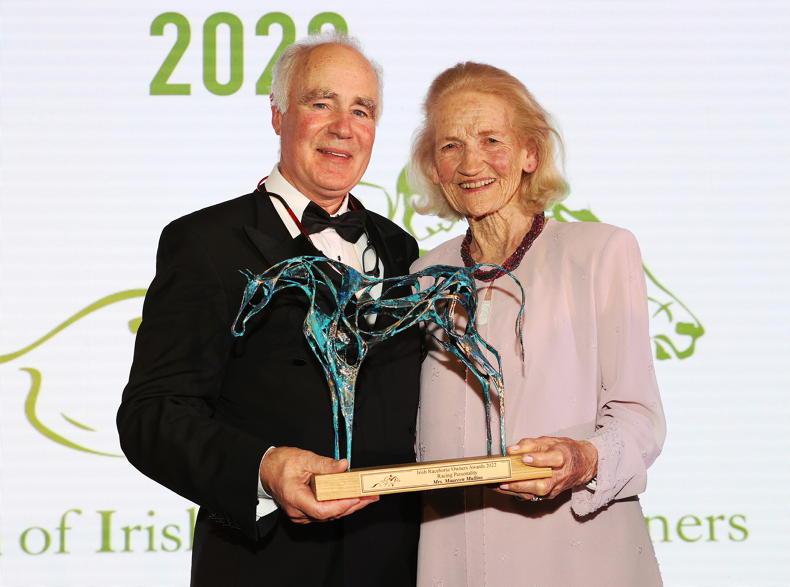THE paper was founded in 1870 and first published on February 19th as the Irish Sportsman and Farmer. It retained that title (though it dropped ‘and Farmer’ a year later) until the issue of November 17th 1894. It was published by William Dunbar from the offices of James Charles, 61 Middle Abbey Street, Dublin and they also printed and published the Church of Ireland Gazette.
A native of Cavan and a classics scholar from Trinity College, Dunbar was known to all as ‘The Governor’ and his motivation for starting the paper was two-fold; firstly his deep love of sport and especially coursing, and secondly that Irish sportsmen were so poorly served by the British-based press. The paper was published every Friday in good time to make the provincial post.
The title was shortened as farming was a contentious issue and this was the time of Gladstone’s Landlord and Tenant Act. Sports covered at the time in the paper included hurling, polo and billiards.
In 1871 new offices and print works were established at 13 Upper Sackville Street (now O’Connell Street). The paper retained a strong Irish identity and many correspondents used Irish by-lines. Humorously the article on English racing matters was written under the byline Erin Go Bragh, which translates as Ireland forever.
In 1881 William Dunbar died and was succeeded as the owner by his wife Mary. She was unique as a female proprietor of an Irish sporting newspaper in the 19th century. In 1882 she moved the offices to her home at 36 North Great Georges Street.
The year 1892 saw the title sold, due to Mrs Dunbar’s infirmities, to a limited company whose chairman was Sir Arthur Brooke Bt (son of Viscount Brooke of Tyrone) and new premises were procured at 59 Middle Abbey Street, next to its original home. The paper fell on hard times and came close to bankruptcy. A ‘white knight’ appeared in 1894 in the shape of medical doctor and businessman Frederick Faber McCabe. He was only 26 years of age and took the title of managing director. He revamped the paper and gave it a new title, effective from November 24th, and called it The Irish Field and Gentleman’s Gazette. The last issue with that title was on February 18th, 1933, the eve of the anniversary of its first edition in 1870.
In 1894 the paper was described as a journal “written by gentlemen for gentlemen”. It carried a variety of stories, including famously a report from the Northern Police Court where a man was charged with beating his wife with a poker. On being sentenced he was asked if there was any cause why the full penalty should not be applied. He replied: “Faith there is yer honour; sure the poker was not hot.” How times have changed – and for the better.
Having had a meteoric rise to fame, Frederick McCabe was hit by a shares scandal in 1898 and he resigned.
The newly appointed managing editor was W A McLachlan and the head office was now 27 Dame Street. McLachlan’s main contribution to the paper was to extend coverage on the front cover to include stories about the British royal family. He also initiated a new feature by Nannie Power O’Donoghue called ‘A Gentlewoman’s Guide’, and this covered gymkhanas, music, literature and fashion.
On the succession of King Edward VII to the throne, McLachlan composed an open letter to the monarch and asked that he send his Derby winner, Diamond Jubilee, to stand at stud in Ireland as a ‘gesture of goodwill’. The horse instead retired to the Royal Studs at Sandringham and was later sold to Argentina.
A big turning point in the history of the paper came in 1903 when the paper was purchased on behalf of The Irish Times by Sir John Alexander Arnott Bt, and moved to 11 D’Olier Street. The sale came about as the paper, for the third time in a decade, faced bankruptcy.
Sir John and his family were involved with Arnotts department store and they set up the Phoenix Park racecourse in 1902.
Sir John was chairman and managing director of The Irish Times and he took the decision to purchase the paper without consulting his fellow directors, paying £250 for it. They were said to have been unimpressed with his unilateral decision.
For two weeks, during Easter 1916, the paper had to cease publication, a rare blip in its history. In the issue of April 22nd the following notice appeared: “It is scarcely necessary to explain the non-publication of The Irish Field for the last two weeks which was attributable to the rebellion which burst out in Dublin on Easter Monday, and short-lived as the insurrection was it suffered to cause much dislocation in the sporting as well as the general life of the country that the production of a newspaper was a matter of extreme difficulty.”

Valentine Lamb was editor of The Irish Field for 33 years
In 1931 the paper took over the Irish Kennel Club Calendar and Studbook and this resulted in most non-sporting affairs in the paper being given over to canine news. On February 25th, 1933, the paper’s title is abbreviated to The Irish Field. Around this time a Dublin-born actor named Wilfred Brambell worked in the paper and he later became famous as the character Steptoe in the BBC’s Steptoe and Son.
Though it had been a tabloid, the paper was reduced to a single broadsheet page in 1942 due to the war. It still covered racing, yachting, golf, cricket, League of Ireland soccer and carried a fair number of advertisements. It reverted to a tabloid in 1958 and by that time the only other sport that the then editor Sydney Robins gave prominence to was rugby, the results of international matches often taking precedence over racing. That changed in 1970 when Valentine Lamb, who died in 2015, took over. He was editor until the sale of the paper in 2003 to The Agricultural Trust, publishers of the Irish Farmers Journal.
On Wednesday, The Irish Field will celebrate its 150th birthday – quite a milestone in global publishing history. For the rest of this year we will look back on a weekly basis at some of the stories that have made the front pages of the paper.
This week we reproduce the front page from the very first issue – and can only assume that people’s eyesight then was far better then than it is today!
With everything from RDS to marriage notices, racing and coursing, a two-day advance warning of a ball under the patronage of the Prince and Princess of Wales and the news that the paper was already a best-seller in advance, there was plenty for readers to enjoy. We hope that we can say the same today.


 This is a subscriber-only article
This is a subscriber-only article
 It looks like you're browsing in private mode
It looks like you're browsing in private mode











SHARING OPTIONS: